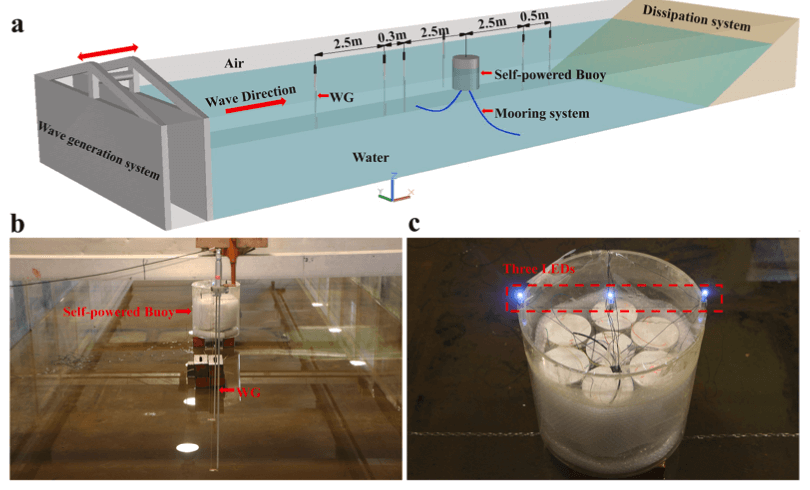Abstract
Due to the bottom effect and the shading effect of the land, the energy density of the wave propagation to the coast reduces significantly, so that small-amplitude waves are widespread offshore. Triboelectric nanogenerators (TENGs) offer the prospect of obtaining the energy of small-amplitude waves with centimeter-level wave heights offshore. This study proposes a numerical model of a self-powered sandwich-like TENGs (S-TENGs) based buoy. The model is calibrated and verified through experiments. The effects of various parameters (e.g., mooring configuration, wave frequency, and wave height) on the hydrodynamic and electrical performance of the buoy under small-amplitude waves of centimeter-level wave height are analyzed. We demonstrated that it is more conducive for the device to extract wave energy when the mooring lines are perpendicular to the wave direction. The device’s peak power is 61.20 mW when the wave height is 6 cm, and the wave frequency is the natural frequency of the device. Moreover, the angle between the S-TENG electrodes and wave direction varies has slightly varied near the buoy’s natural frequency, thus, affecting the electrical properties of the device. At the same time, the electrical performance is sensitive to the incident wave height. This study provides a reference on the benefits of TENGs based self-powered buoys applications for powering marine sensing facilities, marine ranches, and lake environmental monitoring.

